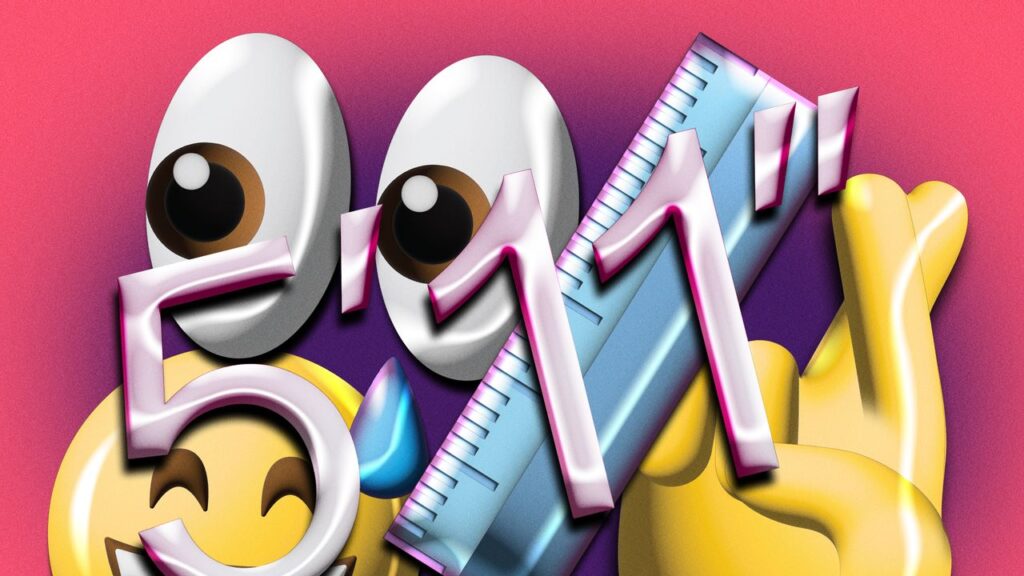A few years back, Nathanael Fletcher, a 29-year-old software engineer living in Springfield, Missouri, hit it off with someone on a dating app. The pair had been going out for a little while when she abruptly popped the question: “Are you really five-eleven”?
Fletcher is comfortable with what he describes as his “middle-zone” height. “I’m not the short guy looking up to everybody,” he says. “I’m not the person that’s always being asked to go reach the thing on the top shelf.”
He’s made a point to truthfully display his height on his dating app profile. So he replied that, yes, he was indeed five-eleven. Skeptical, his love interest doubled down: “Can you prove it?” Fletcher then rummaged around for a tape measure and stood before it, confirming his as-advertised height.
This wasn’t just one guy’s date gone awry. Sussing out a romantic partner’s actual height has become a dating app obsession. And that obsession is often fueled by a collective desire, often among heterosexual women, to find a partner who’s over six feet tall. Seeing a “height requirement” on daters’ online profiles is now par for the course; a former product manager for Bumble told The Wall Street Journal in 2022 that most women on the platform set a baseline height of six feet for prospective male partners. Last year, a viral TikTok tune turned the phrase “I’m looking for a man in finance, with a trust fund, six-five, blue eyes, finance” into a low-key contender for song of the summer. “The way that I see six feet is that it’s one of these status markers,” says Lana Li, who writes about the data of dating. “So much of dating is tied to ego. So we really treat the dating process, unfortunately, often as a way to try to calibrate: ‘Where do I fall?’ You try to figure out how ‘valuable’ you are by how high of a status of a mate that you can attract.”
As a result of this unofficial ideal, guys who happen to measure just under that six feet feel as though they’re getting, well, the short end of the stick. Beyond suspicious questions like the one Fletcher fielded, the introduction of height filters has allowed for what was once a potential nice-to-have to be a systemic sorting requirement. Hinge introduced the feature in 2017; Tinder started testing it as a paid option earlier this summer for its platinum membership tier ($39.99 a month).
While anyone below six feet may be excluded from the feeds of otherwise compatible matches, the system feels most arbitrary to those who are five-eleven. (On a Reddit subthread entitled “sigh…being 5’11” is brutal in this dating economy,” one user shared, in their experience, how much being six feet appears to matter on the apps: “I’m just over 6’ and I used to put 5’13” in my bio like 2 years ago. I noticed a significant increase in matches when I changed to just 6’ 🙃.”)


